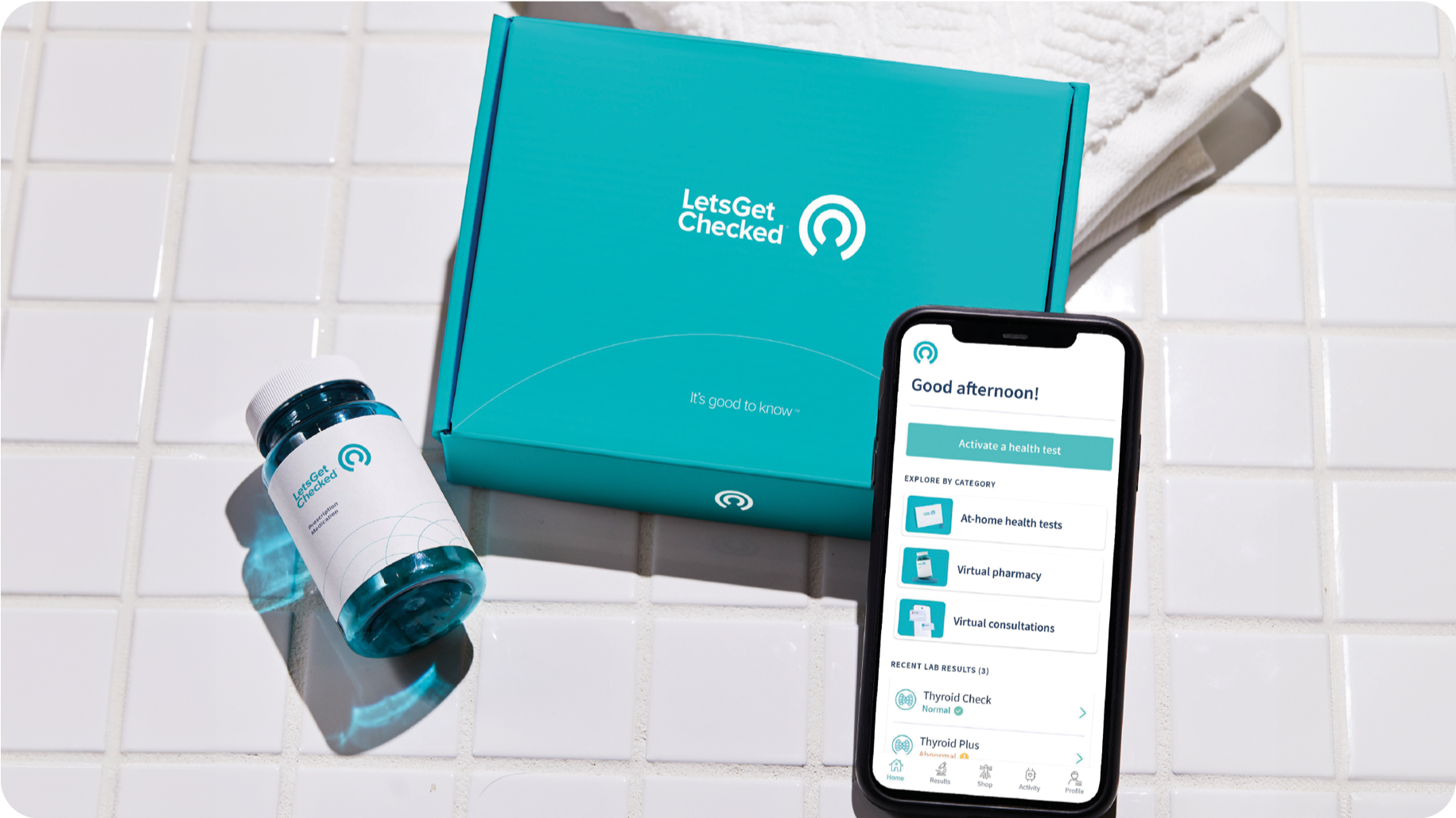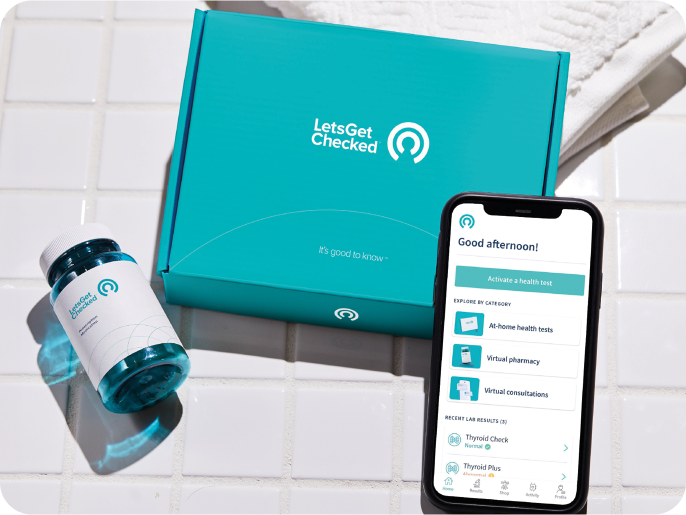Health Equity in United States Healthcare
Our Let’s Talk About Health Equity 2024 Report provides critical insights into the current state of healthcare in the United States. This second annual report offers a comprehensive view of key trends and health disparities and articulates solutions to drive greater health equity. We analyzed primary data trends from our proprietary research survey to capture these sentiments [1]. It sheds light on points of satisfaction and challenges and highlights people’s unmet healthcare needs.


Introduction
The United States is a leader in scientific advancement and medical innovation, ranking first in the Science and Technology category of the 2022 World Index of Healthcare Innovation [2]. Yet, the results of this study show that its healthcare system is perceived by Americans as expensive, impersonal, and difficult to navigate. Many still lack access to the care they need, with only 16% of respondents strongly agreeing that healthcare is readily accessible.
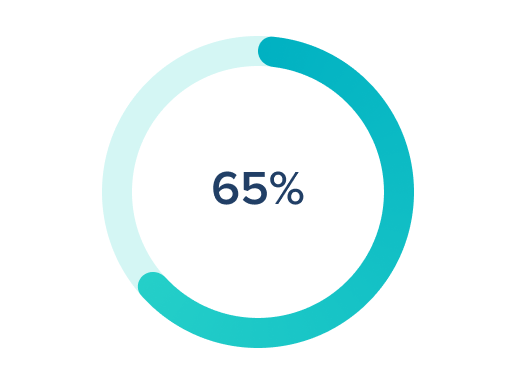
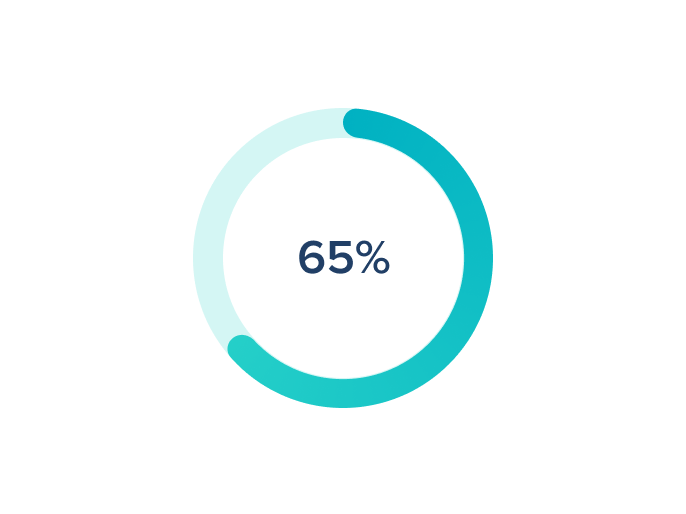
Negative sentiment
65% of respondents harbor negative sentiments about the future of healthcare
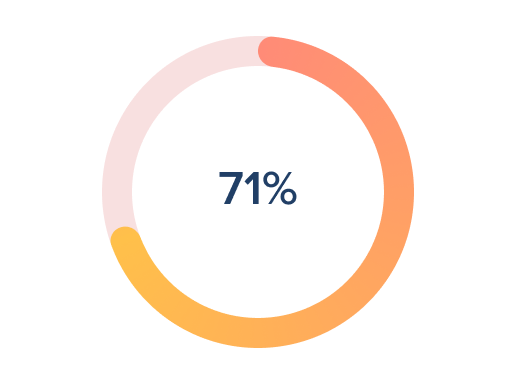
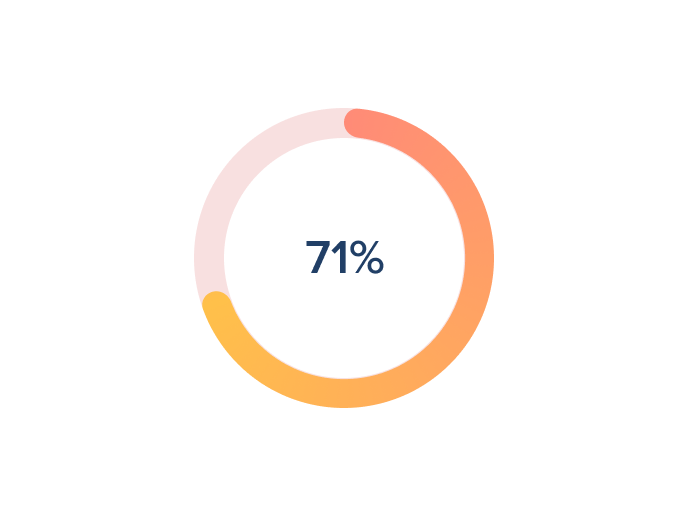
Unfairness
When asked about the fairness of healthcare, 71% reported feeling uneasy, indifferent, disgusted, and pessimistic.
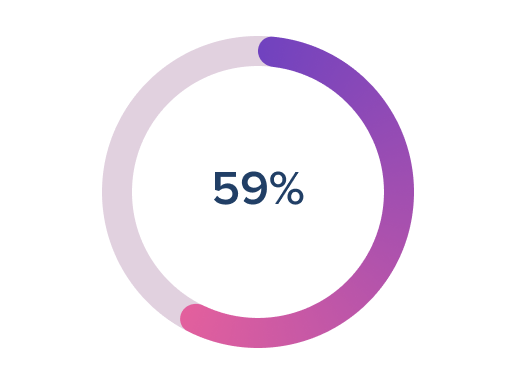
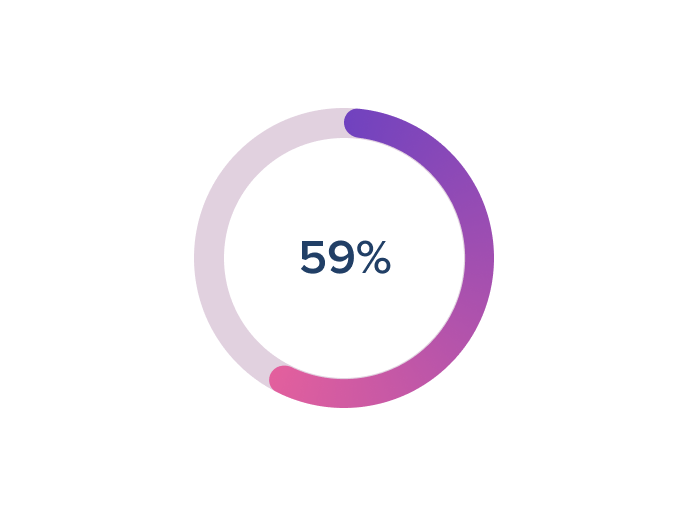
Unexpected cost
The top reported challenges include unexpected costs (59%), understanding benefits (38%), and a lack of control over their care (22%).
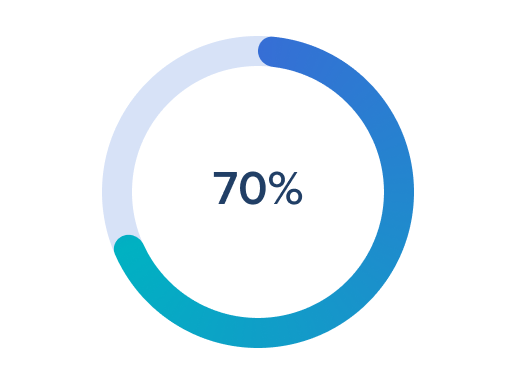
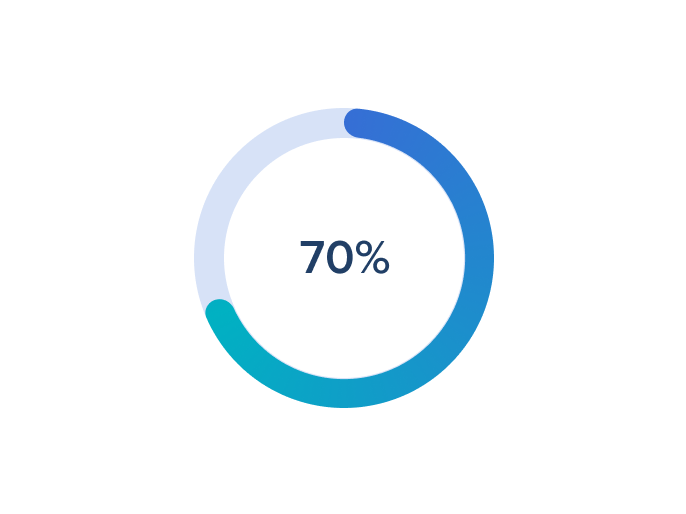
Inadequate solutions
70% of United States adults saying that the healthcare system is failing them[3].


Today's Barriers
Achieving health equity requires us to break down the barriers that prevent individuals from having a fair and just opportunity to reach their highest level of health. In today’s healthcare landscape, Americans face a number of non-medical factors, known as social determinants of health (SDOH), that influence their ability to access healthcare. These factors span socioeconomic, geographic, educational, and social domains.
Socioeconomic Factors
The high costs, lack of transparency, and unexpected bills associated with today’s healthcare system create barriers to good health.

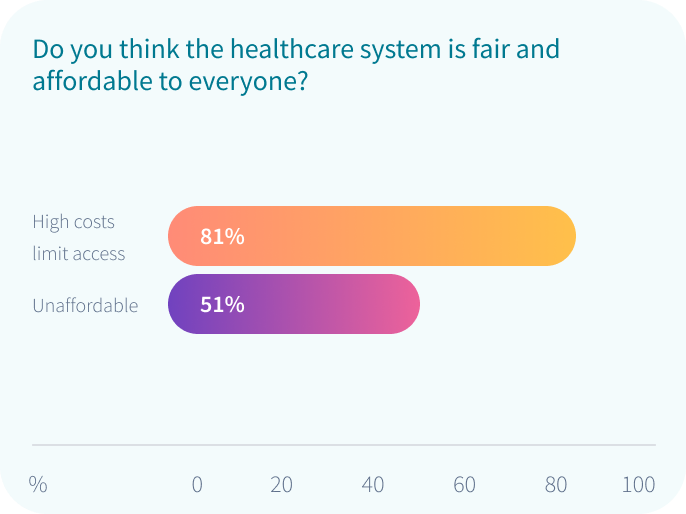
Unaffordable
51% of respondents feel healthcare is unaffordable, and 81% feel high costs prevent equal access to healthcare.

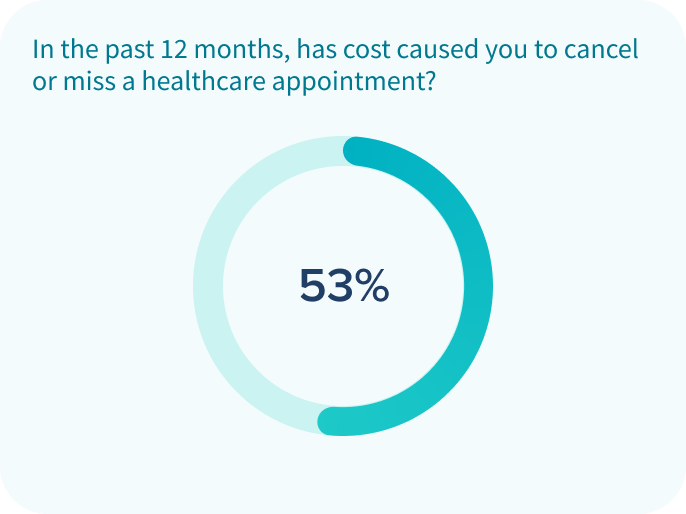
Cancelled Appointments
53% of respondents cancelled a healthcare appointment within the past 12 months, citing cost as the primary reason.
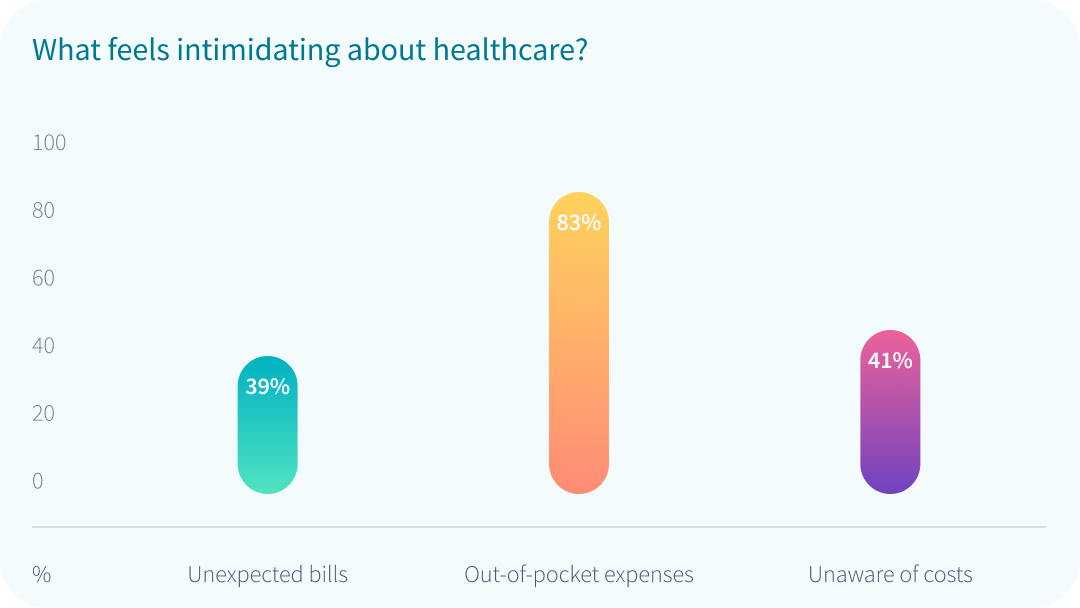
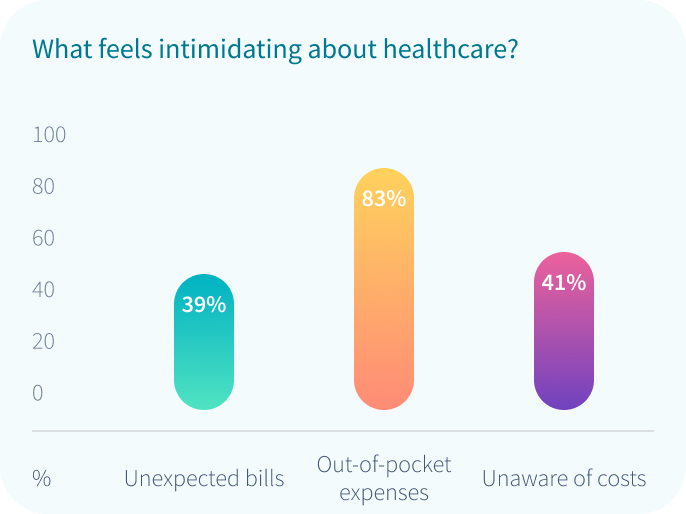
Transparency on Costs
41% of respondents reported feeling unaware of costs, and 39% received and unexpected bill last year. Even with insurance, 83% of respondents have paid out-of-pocket for medical expenses.
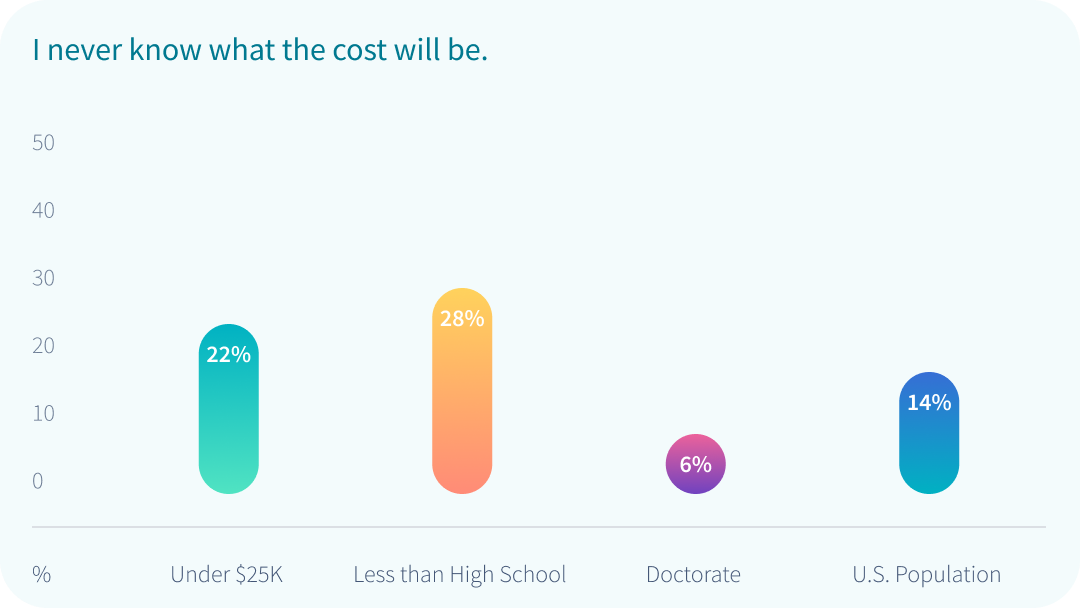
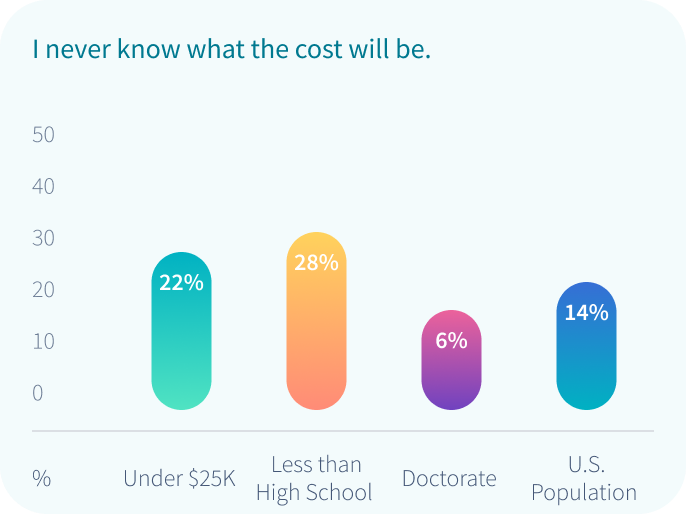
Education
The data shows that those with less than a high school diploma or who make under $25,000 are less likely to understand their medical costs.


Savings
Many Americans do not have the healthcare savings necessary to receive care when needed. 65% of respondents did not save for health expenses last year, while 22% saved less than they had hoped.
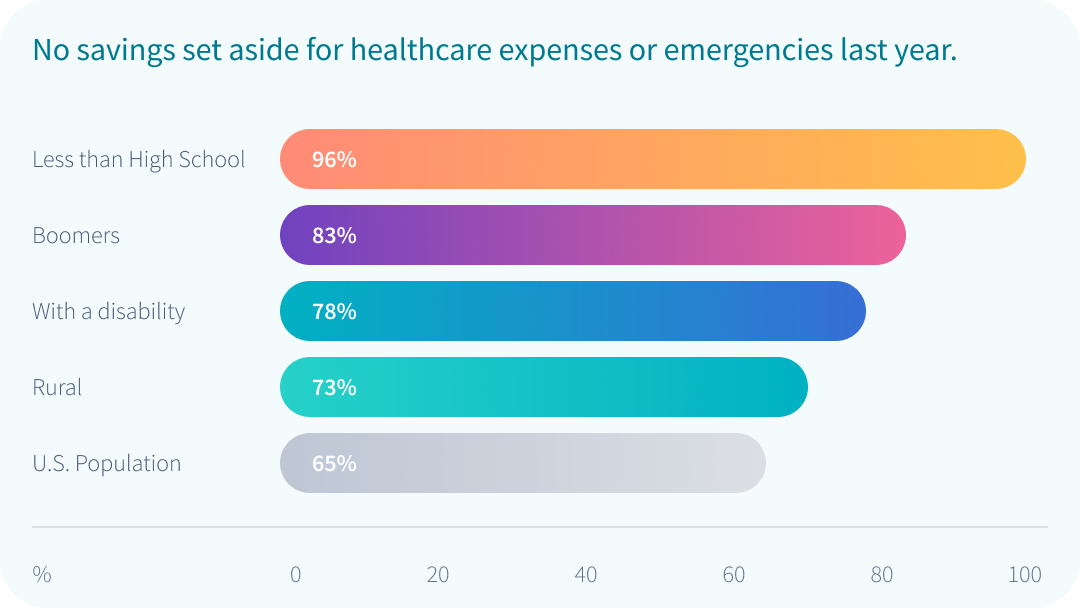
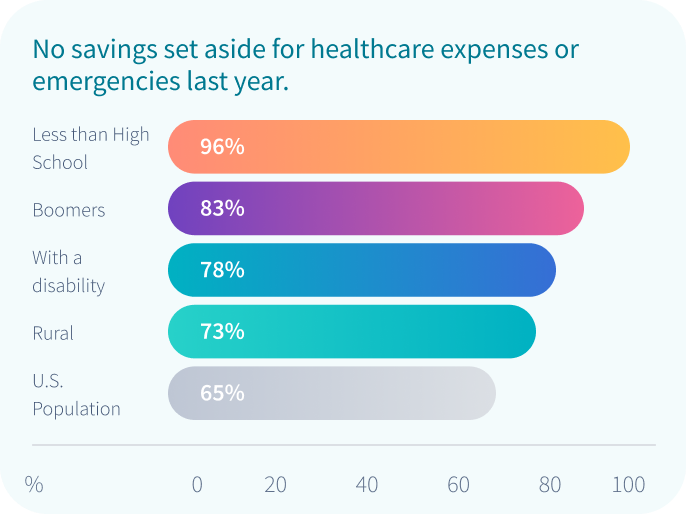
Savings Subgroups
Four subgroups saved less money for healthcare expenses or emergencies last year than the overall US population.
Geographical Factors
Geographic location influences transportation access, commute time, and the availability of healthcare providers. People facing long travel times to healthcare facilities are less likely to seek care when needed [4]. The consequences may lead to poorer management of chronic illness and, thus, poorer health outcomes.

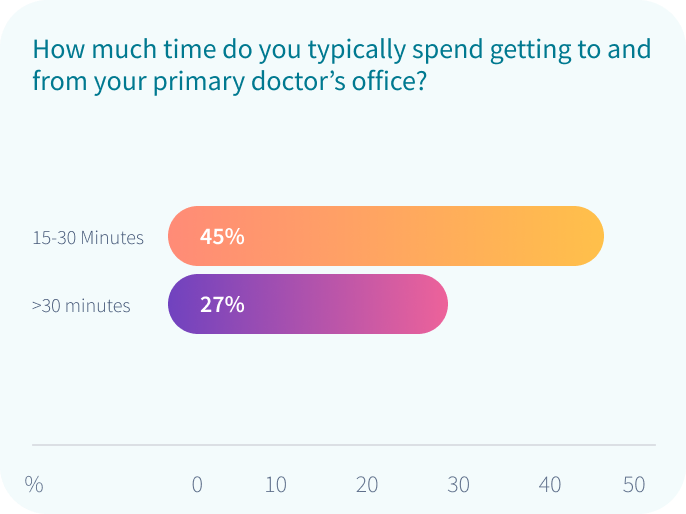
Commute time to primary doctor's office
Nearly half of all respondents (45%) spend 15-30 minutes getting to and from their primary doctor's office, while 27% spend more than 30 minutes.
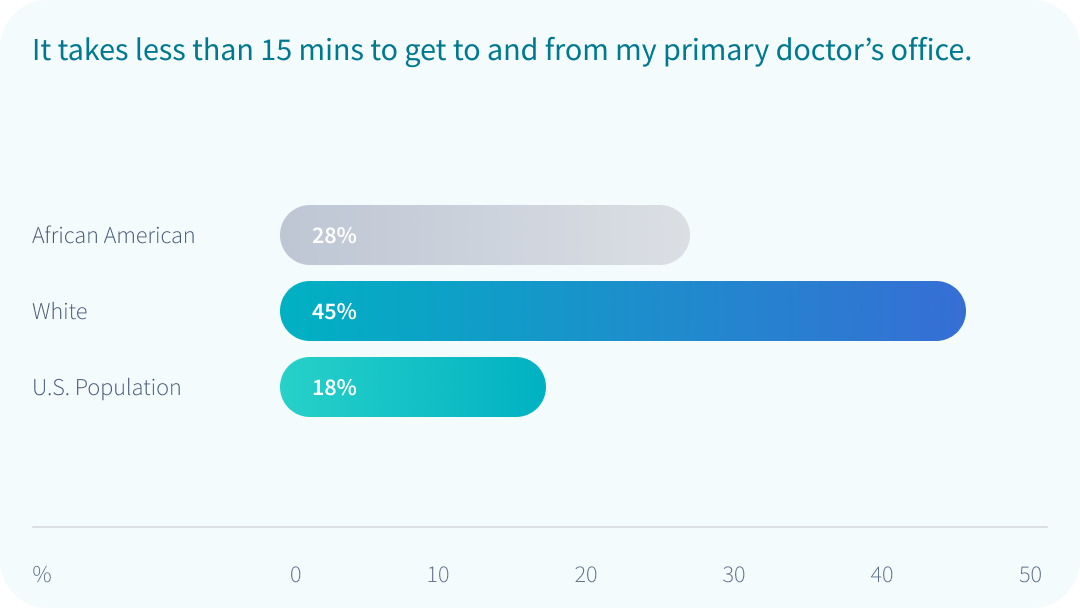
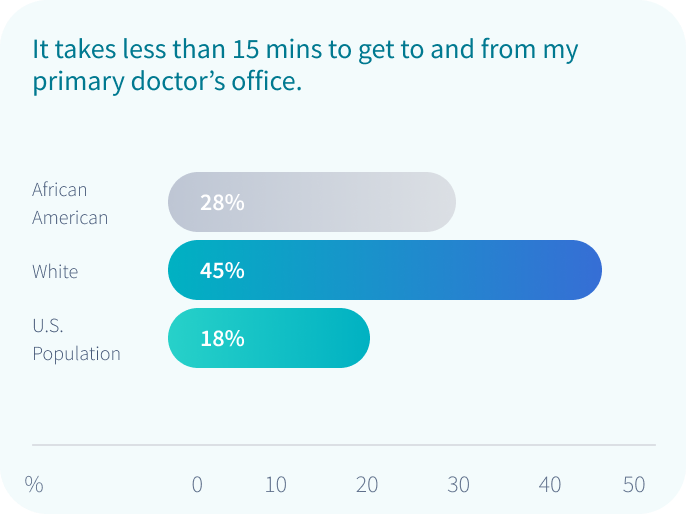
Racial Disparities
Compared to members of other racial and ethnic groups, more black respondents spend longer than 15 minutes travelling to and from their primary doctor's office.
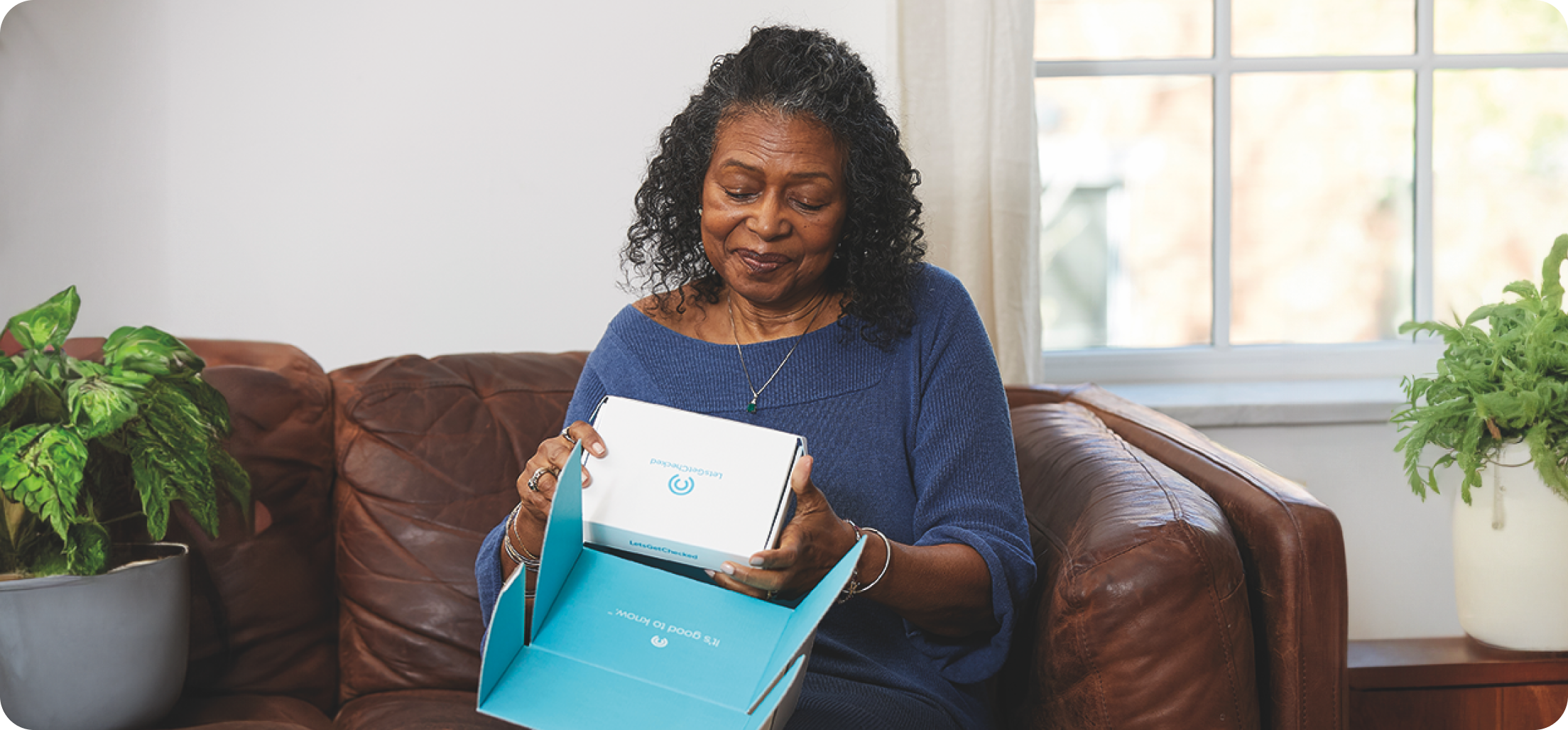

Education Factors
Education and health literacy, or the ability to understand healthcare information, can significantly impact a person's ability to find and use information and services to make health-related decisions. Those with low health literacy are more likely to delay getting care and may have more difficulty finding providers than their counterparts with adequate health literacy [5].

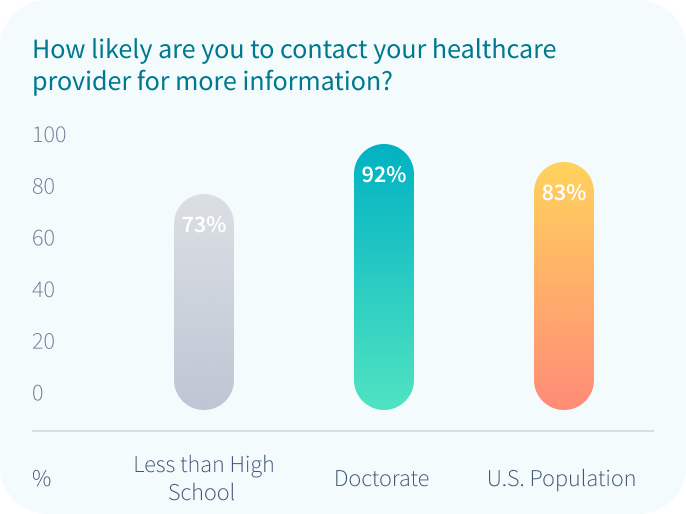
Willingness to contact their doctor
As education increases, so does the likelihood that people will contact a healthcare provider for more information if they aren't sure what to do following an appointment.
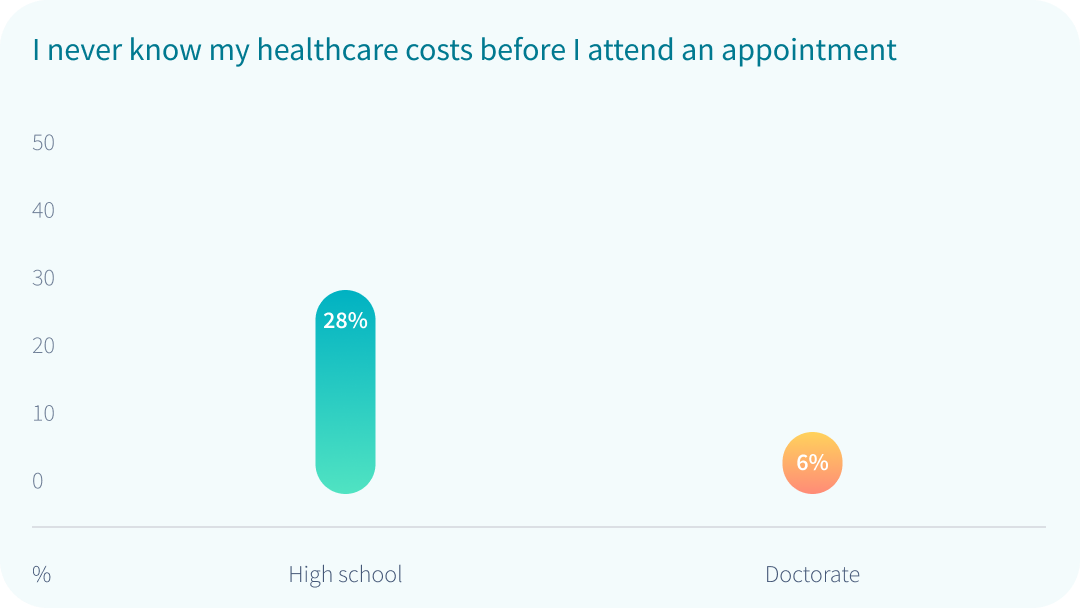
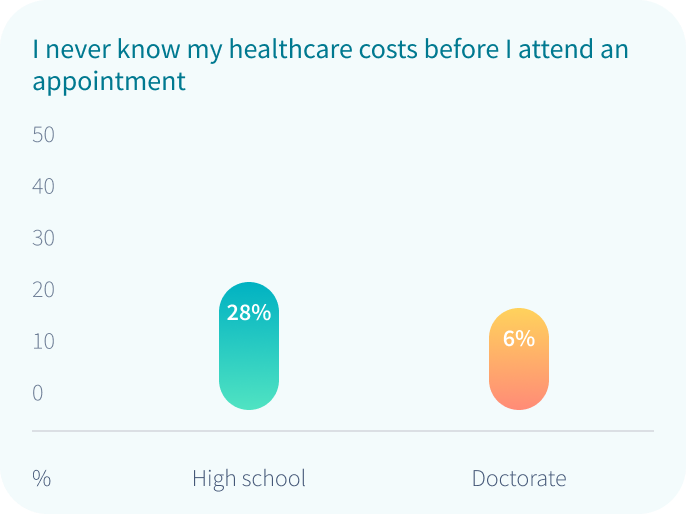
Understanding costs
28% of respondents with less than a high school diploma reported never knowing their healthcare costs before an appointment, compared to 6% of respondents with a doctorate.
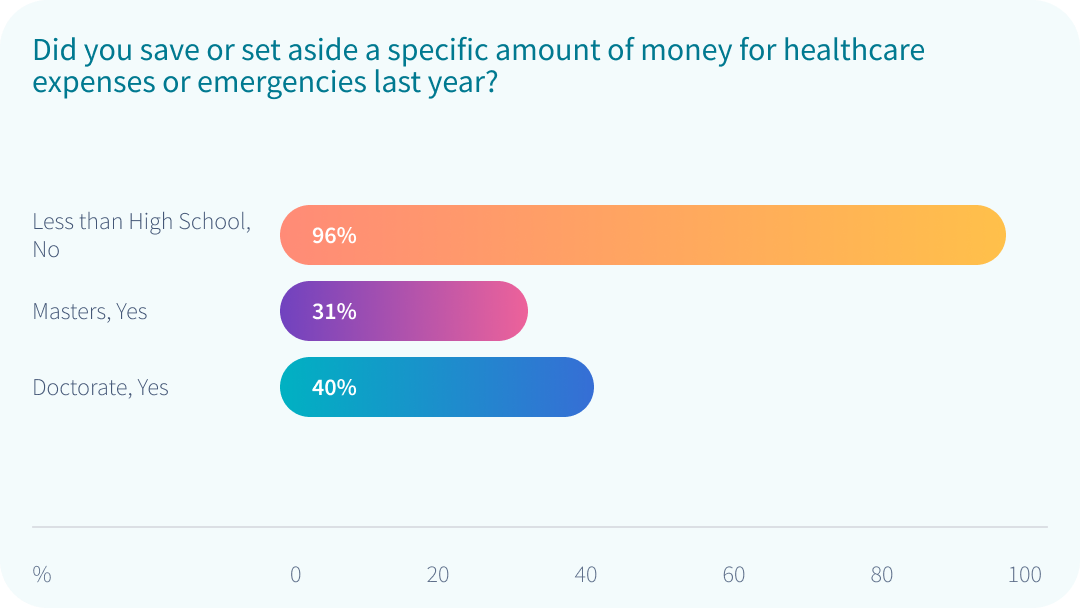
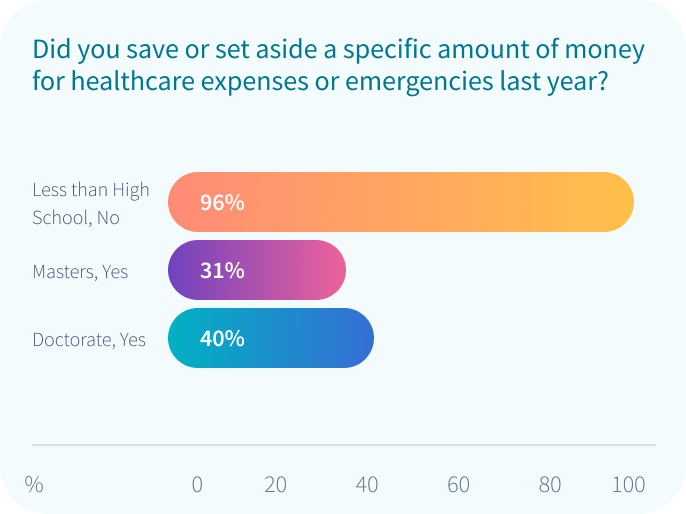
Savings
96% of respondents with less than a high school degree reported saving nothing from healthcare in the past year, while 31% of respondents with a master's degree and 40% of those with a doctorate saved in a personal account.
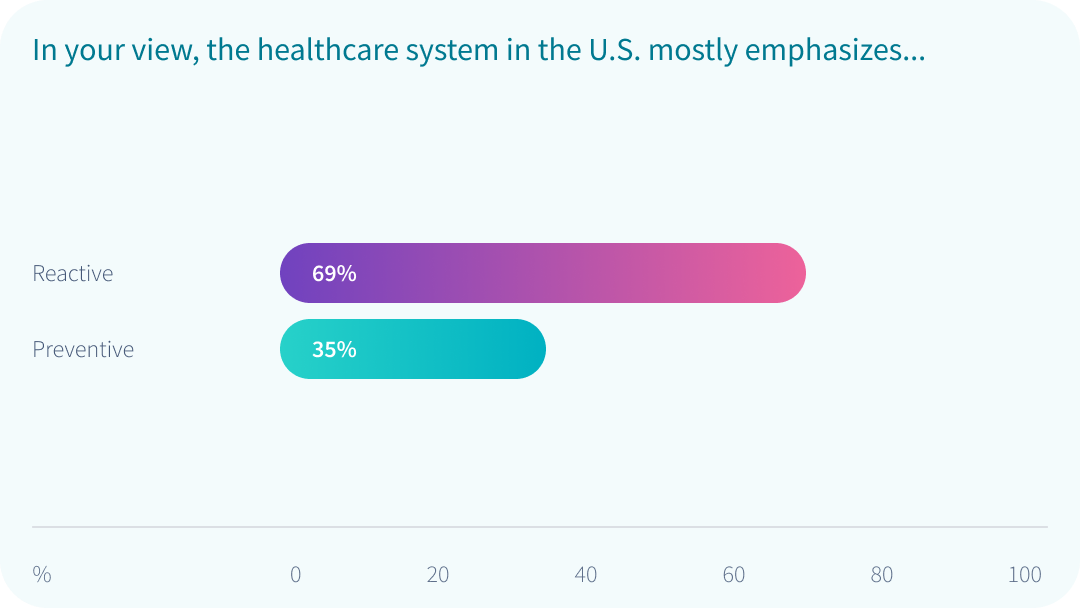
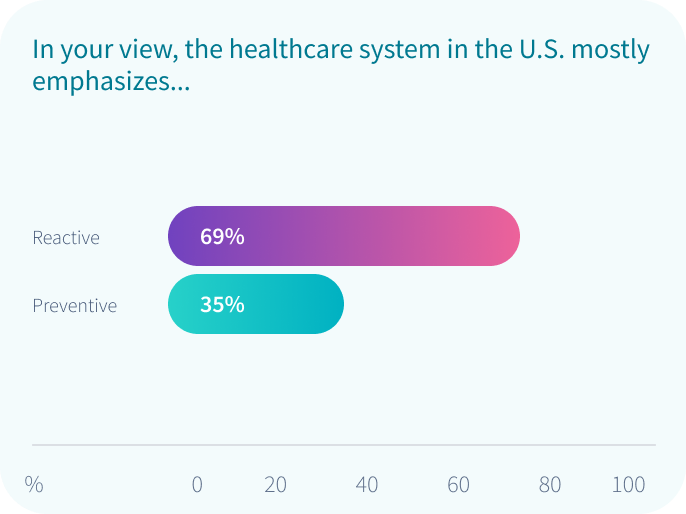
Reactive vs. preventative healthcare
Respondents with a higher level of education are also more likely to feel that the healthcare system focuses on reactive care rather than preventative care.
Social Inclusion and Discrimination Factors
Discrimination and social exclusion against certain groups contribute to negative disparate outcomes for many Americans.
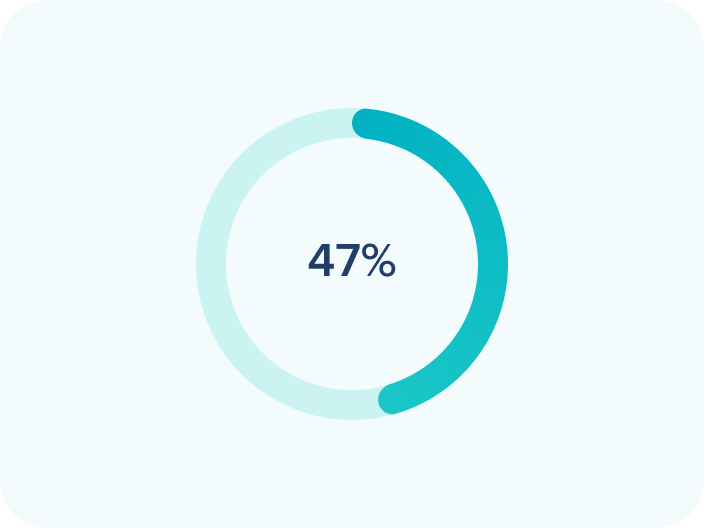
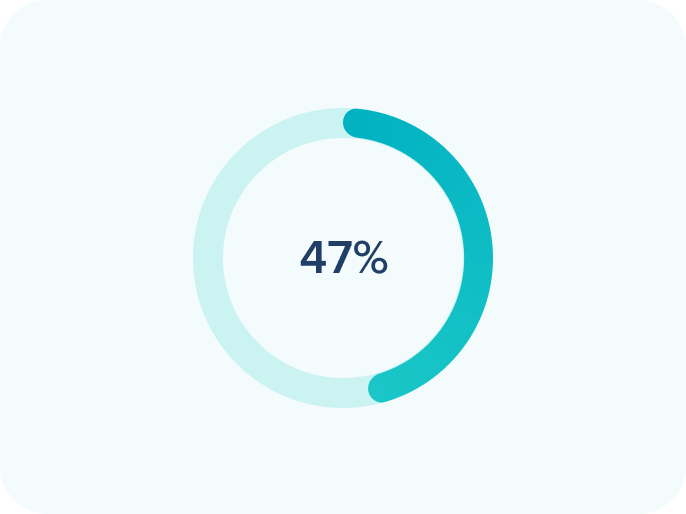
Not feeling seen and heard
47% of the US population worry that their healthcare provider will dismiss their symptoms
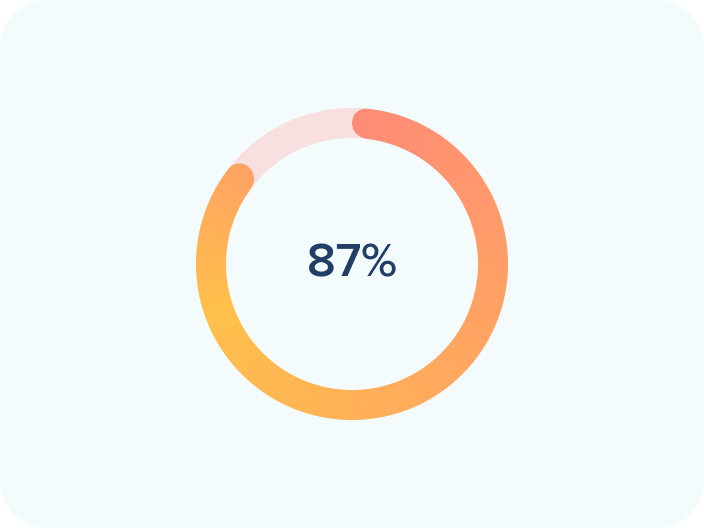
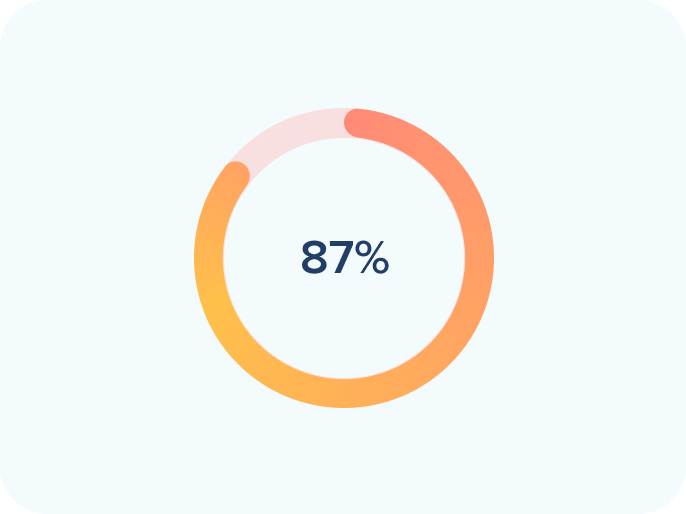
Negative feelings towards healthcare
87% of respondents who identify as LGBTQIA+ have negative feelings towards the fairness of healthcare in the US
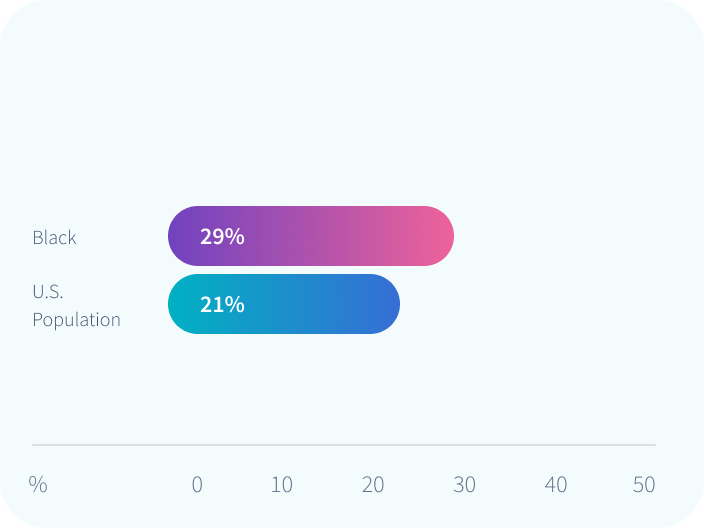
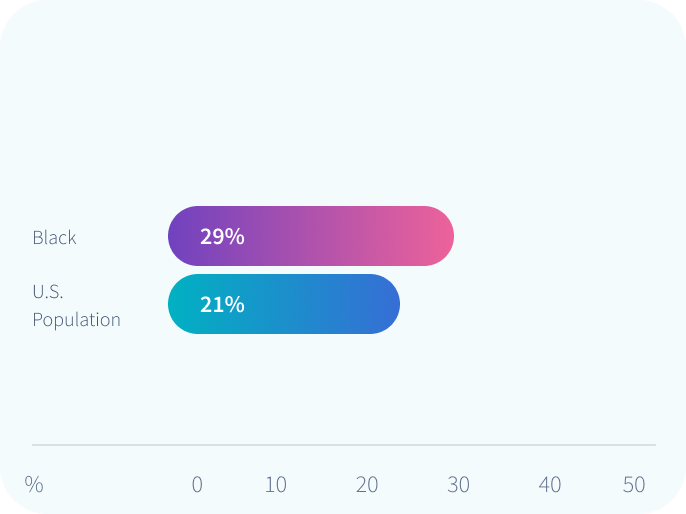
Discrimination in healthcare
Respondents who are Black (29%) are more likely to feel discrimination compared to the US population (21%)

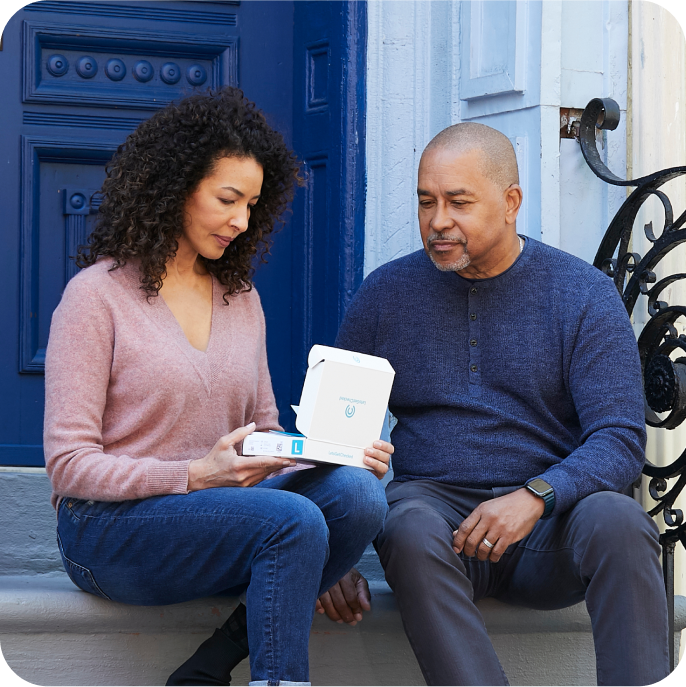
Perception of At-home Healthcare
Overall perceptions are improving, with 41% of respondents saying their impression of at-home healthcare this year is better than last year’s. 34% of respondents feel “optimistic” about at-home collection kits, and 63% agree that at-home healthcare options would help them take care of themselves.
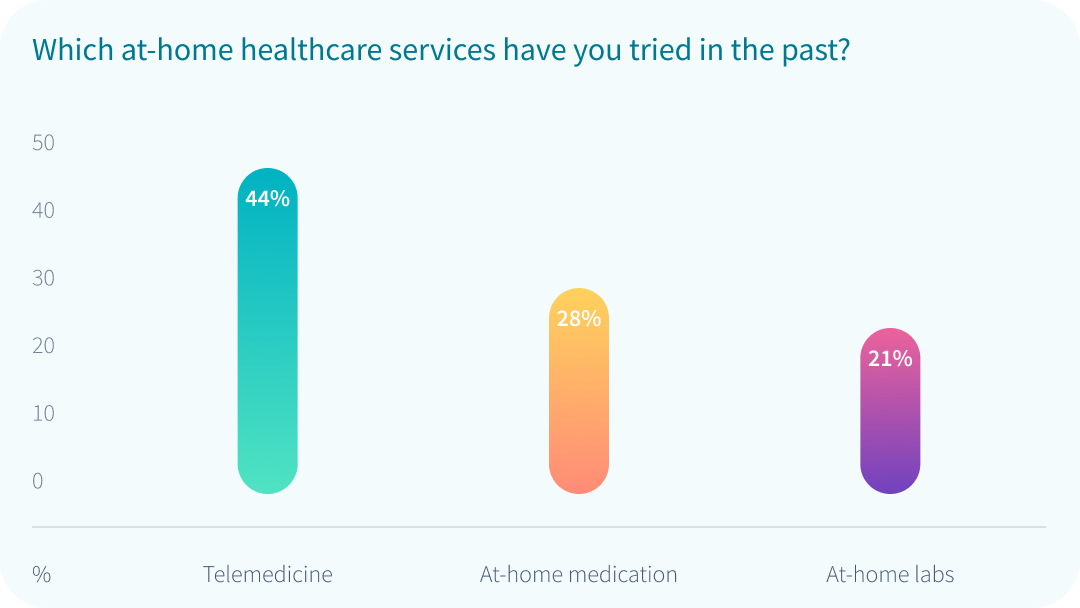
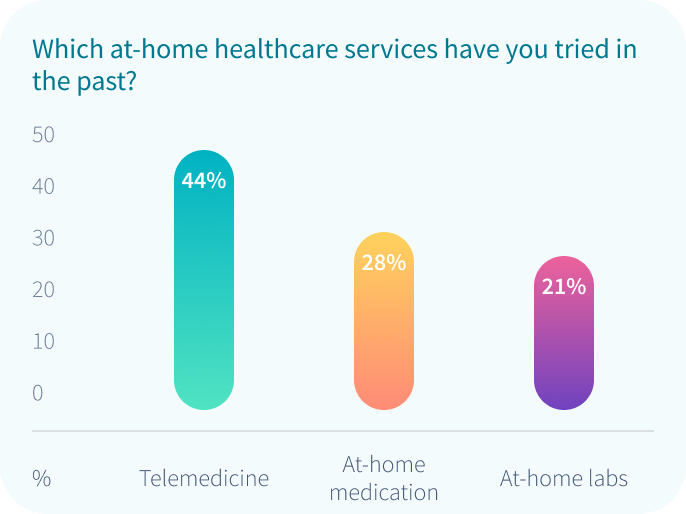
Experience with at-home solutions
44% of respondents have tried telemedicine or virtual appointments, while 28% have tried medication home delivery, and 21% have tried testing with at-home lab results in the past.
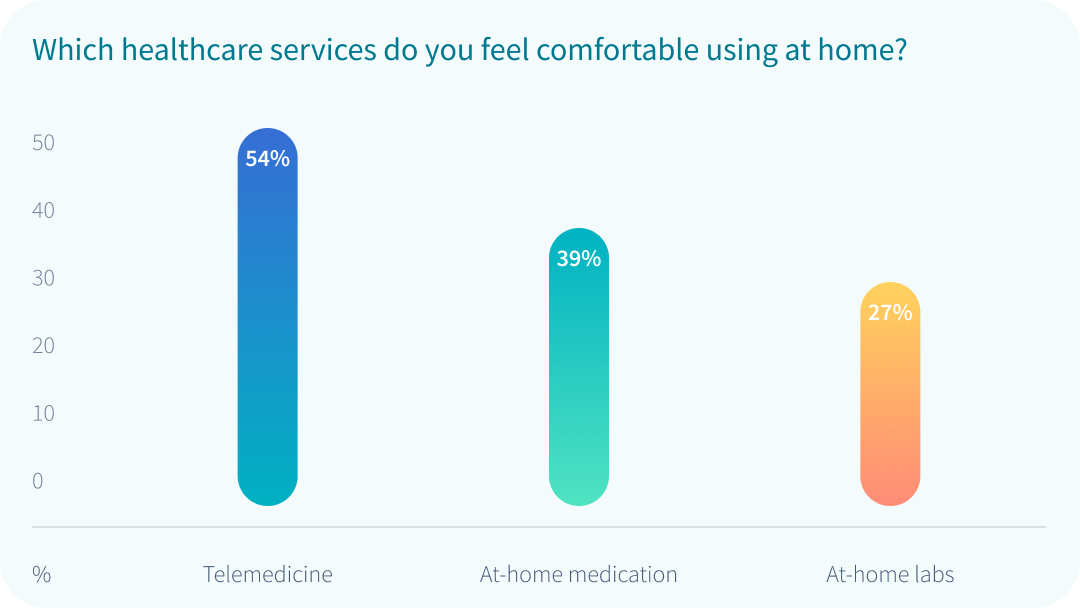
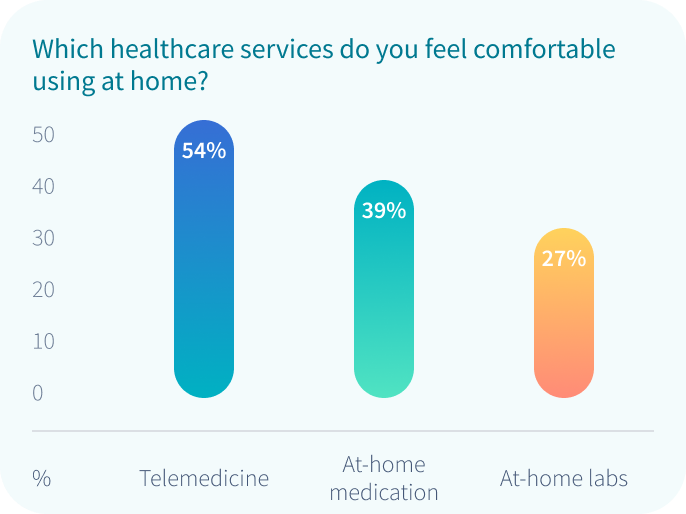
Comfort with at-home solutions
As for comfort level, more than half of respondents (54%) are comfortable with telemedicine or virtual appointments, 49% are comfortable with medication home delivery, and 37% are comfortable testing with at-home lab results.

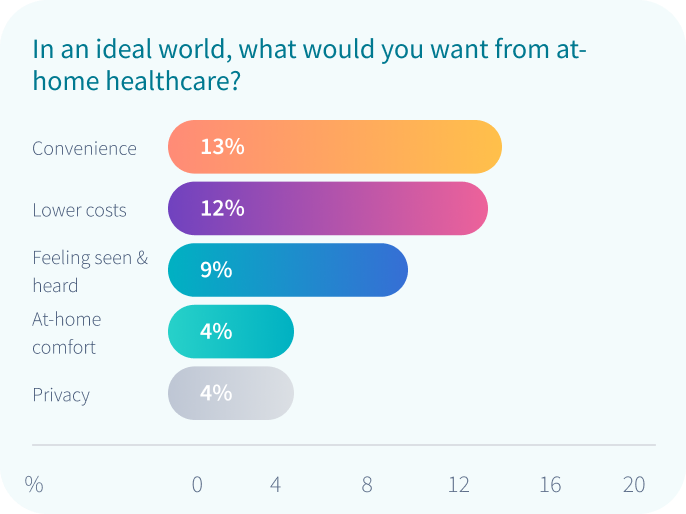
When asked what they want from at-home healthcare, respondents cited the importance of convenience (13%), lower costs (12%), feeling seen and heard (9%), comfort of being at home (4%), as well as privacy and anonymity (4%).
LetsGetChecked at-home healthcare solutions
Explore our range of health tests with at-home lab results


How at-home healthcare can address barriers to health equity
Opportunities for at-home care are continuing to grow. Expanding in-home care capabilities can increase people’s access to care and support while also enabling them to manage their health more actively.
Addressing socioeconomic barriers
According to respondents, high healthcare costs and unexpected bills leave them feeling a profound sense of injustice—often linked with regret, anger, frustration, and helplessness. People want to feel in control of their finances but to do so, more cost transparency in the current healthcare system is needed.
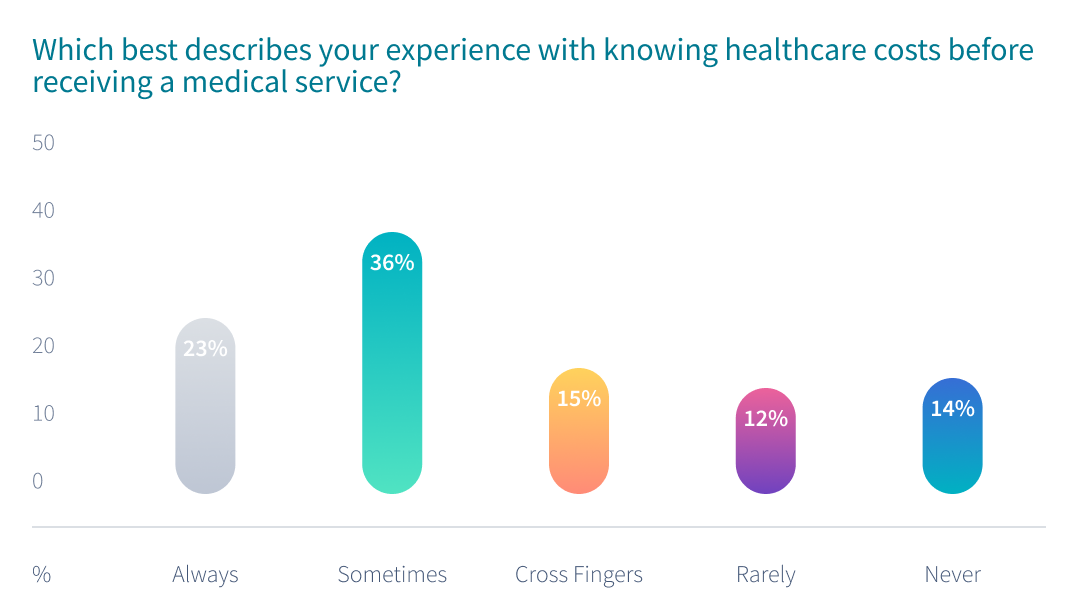

Price transparency
The price transparency of at-home healthcare can help people better plan and budget for medical expenses and make more informed financial decisions regarding their health.
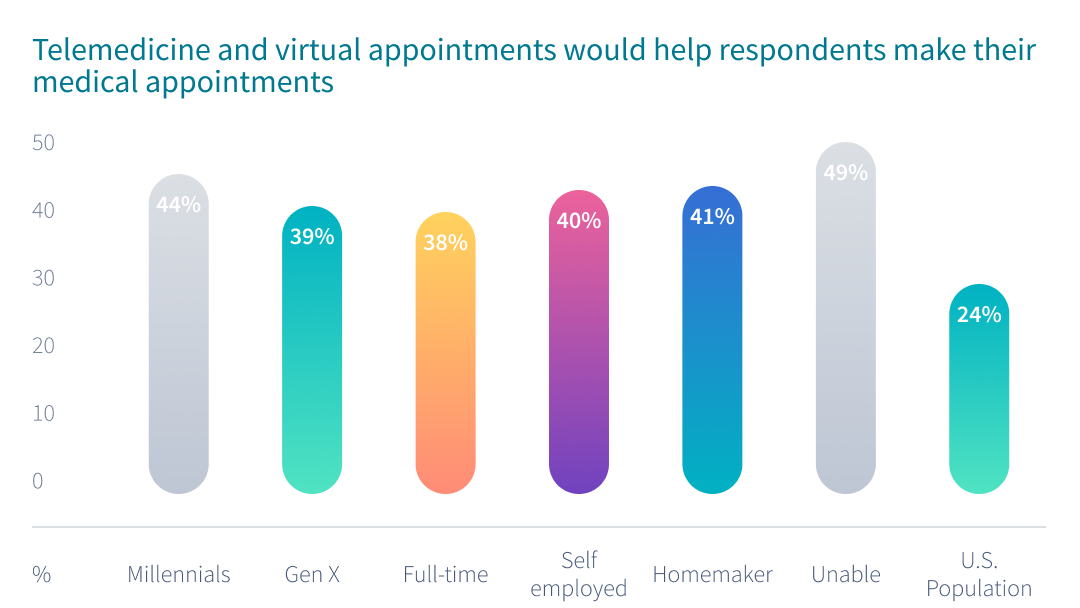
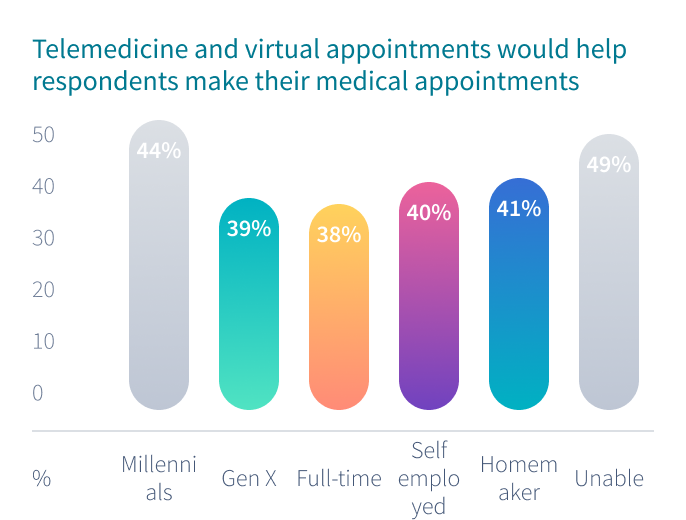
Convenience
The convenience of at-home healthcare can also help individuals save by preventing lost wages from taking time off work or paying for childcare.
Addressing geographical barriers
Traveling to in-person healthcare appointments can be frustrating and time-consuming. For many respondents, a busy work schedule is a barrier to healthcare access.
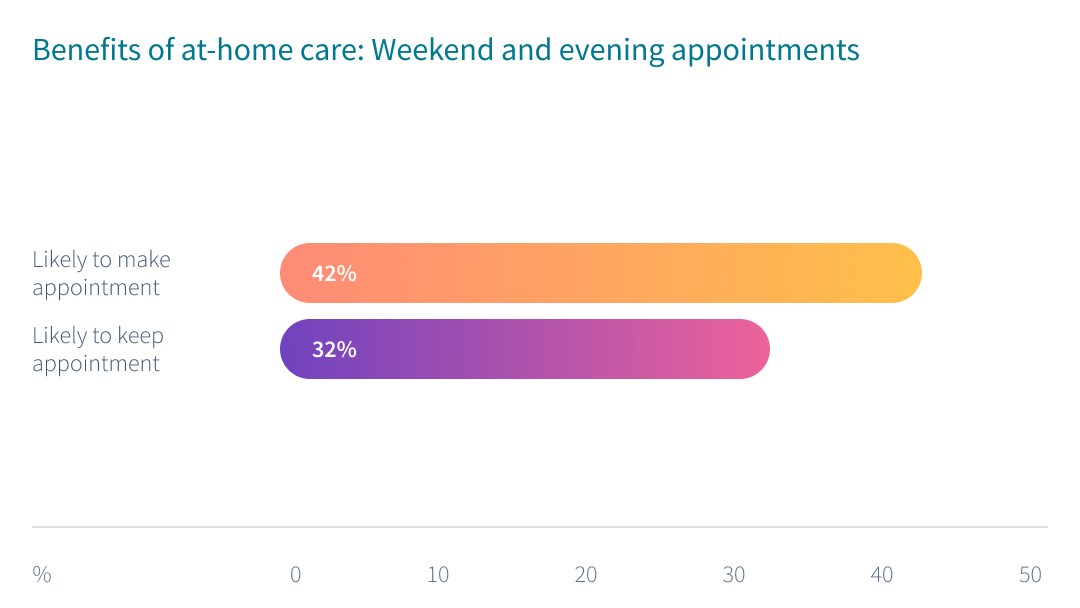
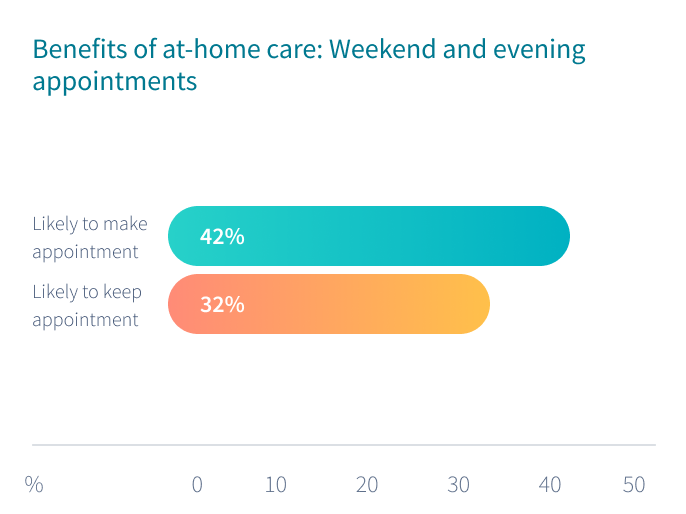
Flexible Hours
With a need for more flexible hours and care options, 42% of respondents said they would be more likely to make their appointments if evening and evening hours were available, and a third (32%) felt that telemedicine options and virtual appointments would help them keep their appointments.
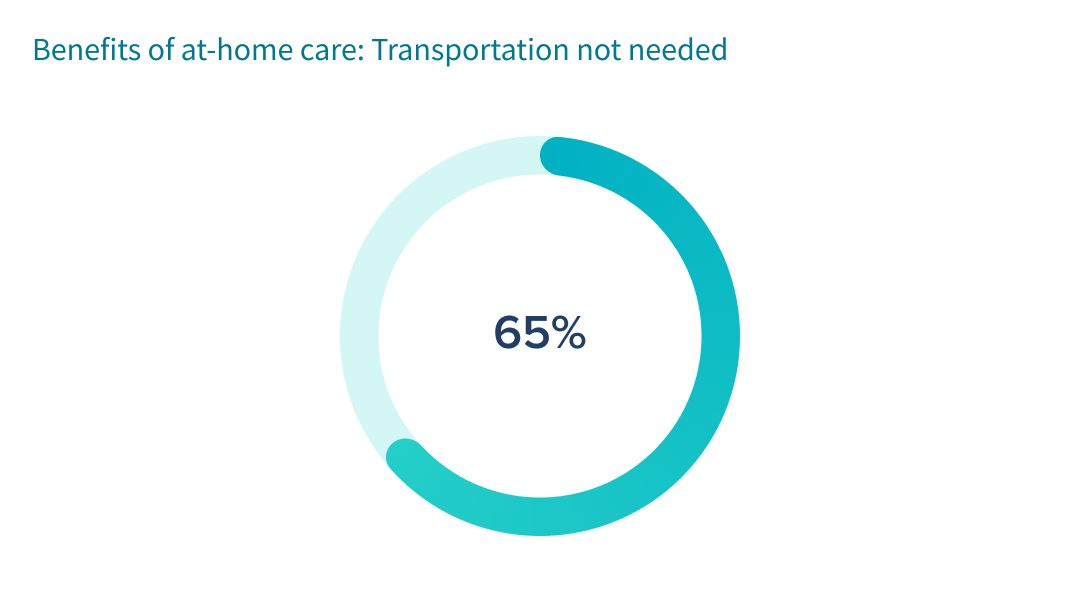
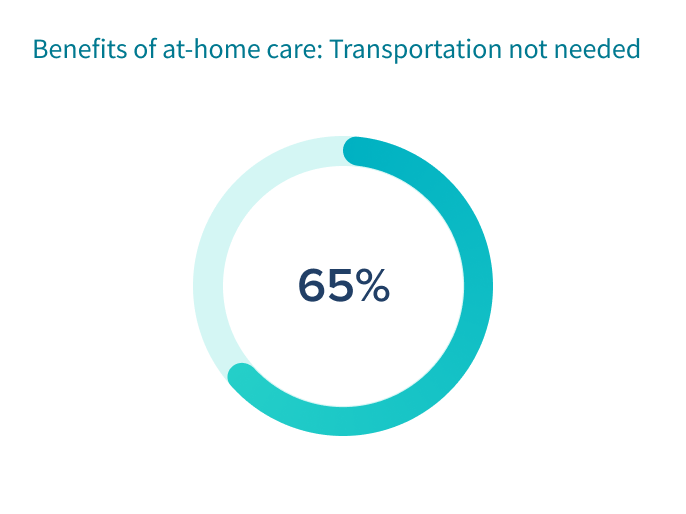
No transportation required
At-home healthcare can better accommodate schedules and offer valuable time-savings by meeting people where they are and removing the difficulties associated with transportation, commute time, taking time off work, and childcare issues.
Addressing education and health literacy
At-home healthcare options, such as testing with lab results from home, can help increase health literacy by empowering and educating patients with crucial health insights. With a desire to better advocate for themselves and make more informed healthcare decisions, 79% of respondents prefer to have their lab test results before a doctor's appointment.

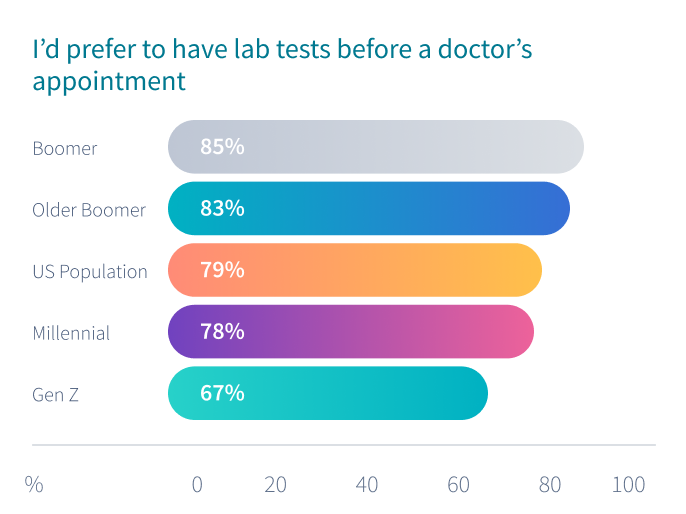
Being your own health advocate
At-home solutions can help make understanding and navigating healthcare easier for people, providing clear health results and actionable steps.
Addressing social inclusion and discrimination
The ability to receive empowering health insights from the comfort and privacy of the home is a significant benefit, especially for members of marginalized groups who have experienced discrimination in a healthcare setting.


Anonymity and privacy
With privacy at the forefront of many people's minds, receiving healthcare from home is a game-changer. 39% of respondents rate anonymity in a medical experience as ''very important'', and 27% rate is ''moderately important''.
Healthcare that meets your people where they are
Learn how we can work together to build a solution that meets your population's needs
Conclusion
The results of our Let’s Talk About Health Equity 2024 Report assert the strong need for more affordable, accessible, and equitable healthcare options. People want to manage their health proactively but struggle to do so due to barriers related to socioeconomic status, geography, education and health literacy, and social inclusion and discrimination. As such, there is a need to reimagine healthcare delivery through an equity lens to close care gaps and meet evolving consumer needs and expectations. With the growing emphasis on addressing the disparities in access to care, leveraging home solutions as a complement to existing care models is vital to making healthcare more transparent and accessible for all. As at-home healthcare solutions continue to grow and evolve, so will opportunities for people to access more convenient, affordable, and inclusive care.
